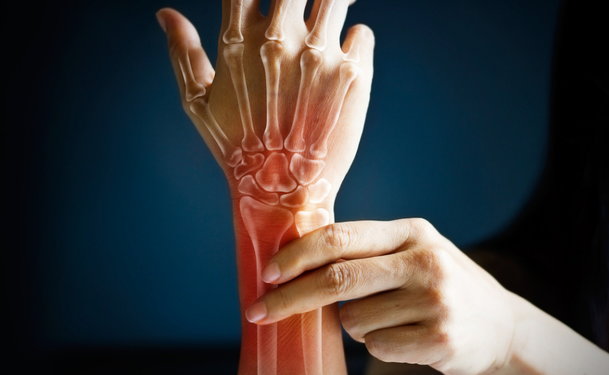Most of us are likely to sustain different types of wounds throughout life as we participate in daily activities. Many minor wounds result in damaged skin cells that lose their function and need time and simple treatment to heal. Most common wounds are superficial, limited to the outer skin layers. Some are deeper, reaching the underlying tissues and organs. Depending on the cause, site and depth, a wound can range from simple to life threatening.
Causes and Types of Wounds
Depending on the healing time of a wound, it can be classified as acute or chronic. Those classified as acute wounds heal uneventfully (with no complications) in the predicted amount of time. Those classified as chronic wounds take a longer time to heal and might have some complications.
Wounds can be open or closed. Open wounds are wounds with exposed underlying tissue and/or organs that are open to the outside environment (like penetrating wounds). Closed wounds have damage that occurs without exposing the underlying tissue and organs (non-penetrating wounds).
Another way to classify wounds is to determine if the wound is clean or contaminated. Clean wounds have no foreign materials or debris inside, whereas contaminated wounds or infected wounds might have dirt, fragments of the causative agent, bacteria or other foreign materials.
Wound origin can be either internal or external. Internal wounds result from impaired immune and nervous system functions and/or decreased supply of blood, oxygen or nutrients to that area; such as in cases of chronic medical illness (diabetes, atherosclerosis, deep vein thrombosis). External wounds are usually caused by penetrating objects or non-penetrating trauma, and other miscellaneous causes as follows:
- Non-penetrating wounds: These are usually the result of blunt trauma or friction with other surfaces; the wound does not break through the skin, and may include:
- Abrasions (scraping of the outer skin layer)
- Lacerations (a tear-like wound)
- Contusions (swollen bruises due to accumulation of blood and dead cells under skin)
- Concussions (damage to the underlying organs and tissue on head with no significant external wound)
- Penetrating wounds: These result from trauma that breaks through the full thickness of skin; reaching down to the underlying tissue and organs, and includes:
- Stab wounds (trauma from sharp objects, such as knives)
- Skin cuts
- Surgical wounds (intentional cuts in the skin to perform surgical procedures)
- Gunshot wounds (wounds resulting from firearms)
- Miscellaneous wounds may include:
- Thermal wounds: Extreme temperatures, either hot or cold, can result in thermal injuries (like burns, sunburns and frostbite)
- Chemical wounds: These result from contact with or inhalation of chemical materials that cause skin or lung damage
- Bites and Stings: Bites can be from humans, dogs, bats, rodents, snakes, scorpions, spiders and tick
- Electrical wounds: These usually present with superficial burn-like or sting-like wounds secondary to the passage of high-voltage electrical currents through the body, and may include more severe internal damage.
Signs and Symptoms
The signs and symptoms depend on the wound site, depth and causative agent. In general, wounds present with pain, redness, swelling, bleeding and loss or impairment of function to the wounded area. Symptoms may include fever, malodorous pus drainage and heat, particularly in cases of infection.
Complications
The most common wound complications are:
- Infections: Wound infection presents with pus drainage, foul odor, fever, dull throbbing pain, mild swelling and heat at wound site.
- Inflammation: Inflamed wounds are hot, red, painful, swollen and hard to move.
- Scarring: Regenerated cells have different characteristics and fibrous tissue that can heal the wound, but may leave a scar behind.
- Loss of function: Many wounds can be disabling and life threatening if a major organ, blood vessel or nerve was damaged. Either way, while the wound is still fresh or healing, the affected limb or area will lose its functionality until all lost or damaged tissue is repaired.
Who Is at Risk
All human beings are at risk for sustaining or developing wounds, but the risk is higher in children, elderly people, alcoholics, those with addiction to narcotics, or people with mental illness or disability. People living in a hazardous environment or having dangerous jobs may also be at higher risk for wounds. Patients with chronic illness and/or weakened immune systems are at even higher risk for developing wounds.
Wound Treatments
Treatment is different for each type of wound. However, all wound treatment must include the following:
Cleansing with regular tap water to remove all foreign materials. When possible, the wound should be washed with soap. Some wounds may need flushing with medical syringes, while others may need surgical debridement to remove foreign materials or dead tissue.
Treatment should also include proper wound care and dressing, and the application of local antibiotics where needed. These basic steps in wound treatment can help prevent wound infection and protect it from the environment. Some anti-inflammatory medicine and pain killers might also be prescribed to reduce discomfort and improve quality of life. If the last tetanus shot was given five or more years prior, it is recommended that a wound patient receive a new tetanus shot or a booster; especially in cases of human or animal bites, or dirty wounds.
Preventing Wounds
The best way to prevent wounds of all types is to follow optimal safety measures at all times, paying extra attention to surrounding hazards in new environments. Always take the necessary precautions when handling sharp objects, and corrosive or hot materials.


